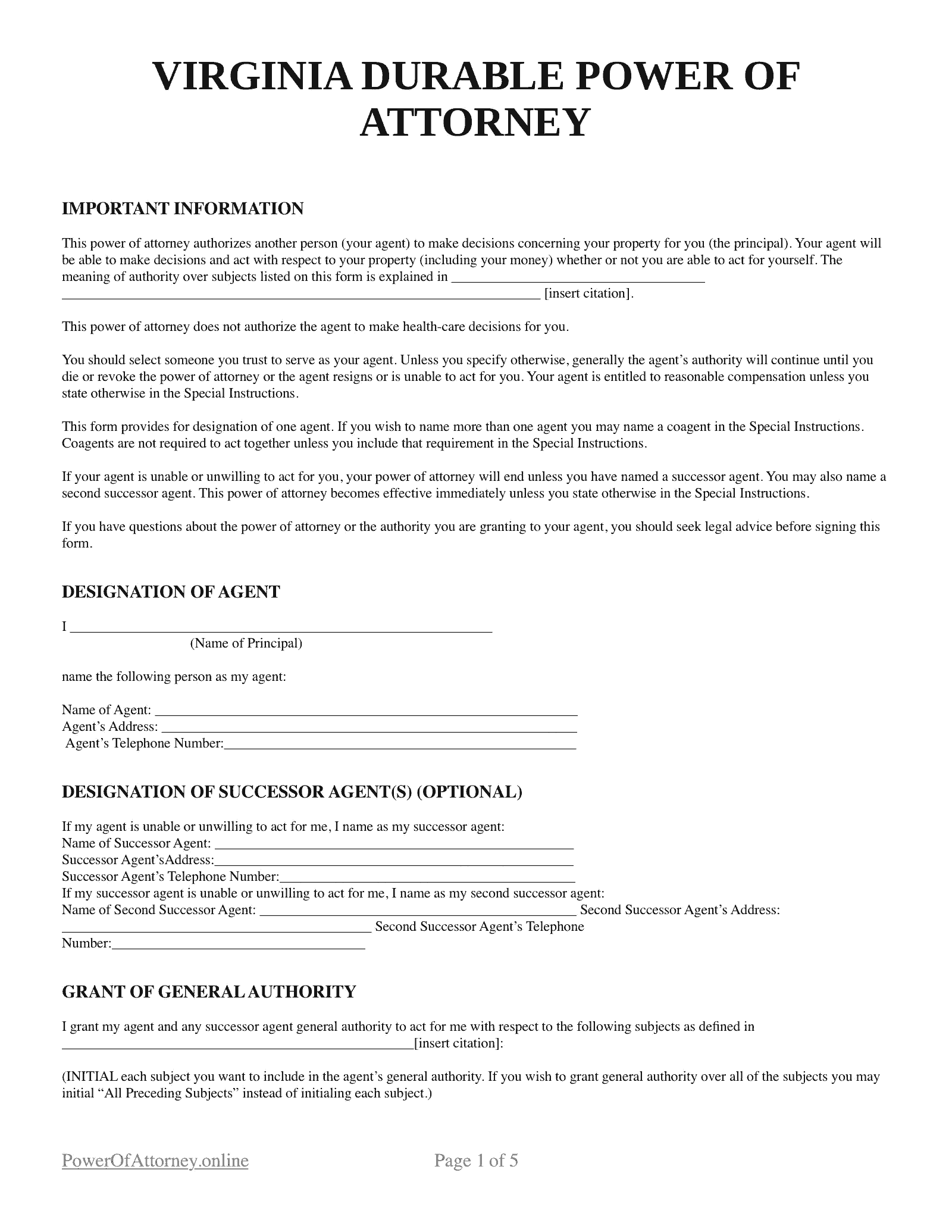Free Virginia Durable Power of Attorney Forms
In Virginia, a durable power of attorney (POA) allows a person (known as the principal) to assign an agent of their choice to make decisions on their behalf. The principal permits the agent to perform acts such as paying bills, selling and leasing property, or making healthcare decisions.
Most POAs end if the principal becomes incapacitated. Only a durable power of attorney remains valid until revocation or the principal’s death.

Virginia Durable Power of Attorney Laws
The Code of Virginia defines the limitations and actions covered by a durable POA in the state. These laws cover the required signatories and how agents can execute the POA.
- Signing a POA - The POA must be signed by the principal or by another person directed by the principal in the presence of a notary public (NP). The signatures will only be acknowledged as genuine if recognized by the principal and the NP (Code of Virginia § 64.2-1603).
- Defining a durable POA - A durable POA allows the agent to act on behalf of a principal who is incapable of making decisions, whether through physical impairment or absence (Code of Virginia § 64.2-1600).
- Termination of durable POA - The durable POA will remain in effect even when the principal is incapacitated. However, the principal can include the specific termination of the POA if deemed incompetent or debilitated (Code of Virginia § 64.2-1602).
Signing Requirements in Virginia
In the state of Virginia, the principal, the agent, the successor agent, and two witnesses must sign the POA. The document should be signed in the presence of a notary public to put it into effect (Code of Virginia § 64.2-1603).
How To Write a Durable POA in Virginia
In Virginia, you can write a durable POA using a downloadable and printable PDF form. It provides a template and guideline to set the terms of the document.
Here is a step-by-step guide to completing your durable POA in the state of Virginia.
1. Choose an agent to delegate your principal power
Download the form and choose an agent and successor agent. Ideally, they should not know each other and could be trusted to act for the principal’s benefit.
The agents must provide their addresses and forms of identification with identifiable signatures.
2. Include your personal information and confirm the identity of the agents
The document will begin with a statement of declaration identifying the principal through their complete name and current residence.
Then, specify the identity of the agent, adding the date to record the signing of the document that gives them the authority to act as attorney-in-fact.
3. Document the date when the agent can wield authority
Next, indicate the exact time and situation when the agent can act on behalf of the principal. This is the date the POA becomes active.
4. Review the items in which the agent can act in the principal’s name
The principal must clearly outline the terms they grant the agent permission to make decisions on their behalf. Specificity is crucial as the POA will be the only proof of the agent’s authority in the future.
This section must also include the limitations the principal wants to set, such as when the POA is no longer applicable or which healthcare situations would define the principal's incapacity.
5. The document must be signed
Before the document becomes effective, it must be signed and supplied with the name of the state where the POA will be used. The principal, agents, successor agents, and witnesses must sign it in the presence of an NP.
The witnesses must add their names and addresses beneath the principal’s signature to make the POA effective at the stated date.